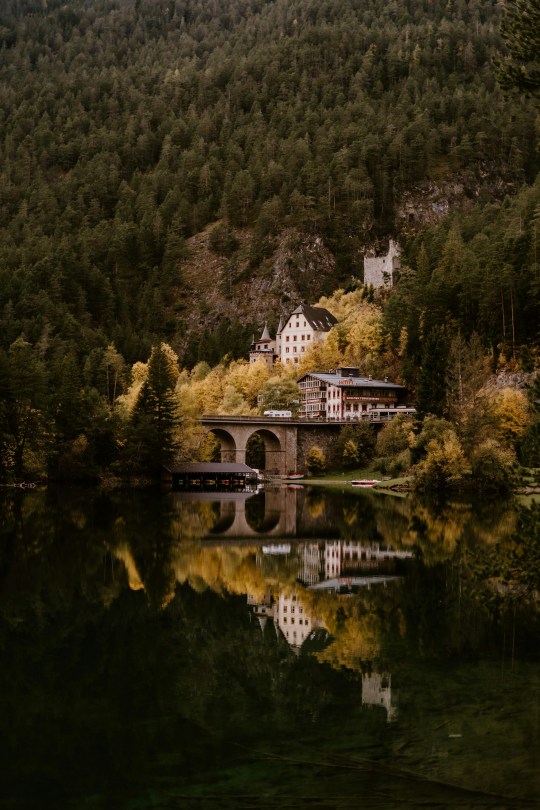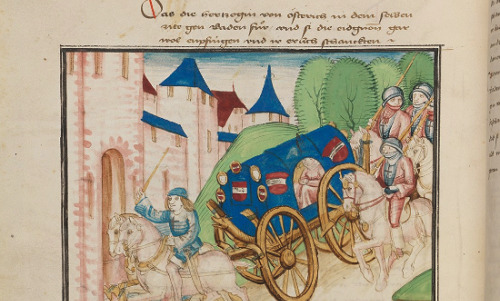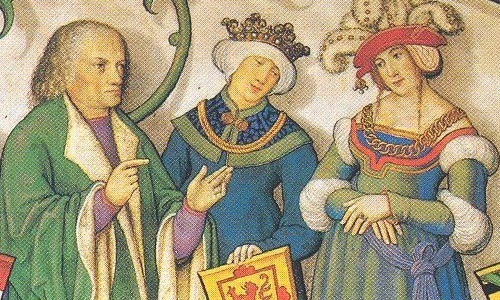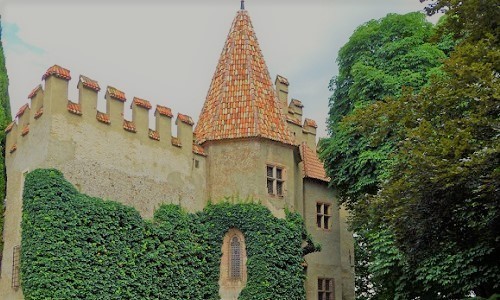#fernsteinsee castle
Text

Fernsteinsee, Austria (by Lena Kestler)
3K notes
·
View notes
Photo

Fernstein castle _ Years: 2019 Location: Osterreich 📸 #canon Reason: work _ #austria🇦🇹 #osterreich #fernpass #igaustria #visitaustria #weloveaustria #castle #fernsteinsee. #canonphotograph #canonitalia #streetphotography #igstreet #istagramers #yallersaustria (presso Fernpass) https://www.instagram.com/p/B2CIUK1nx5-/?igshid=1va9avhfhnwaj
#canon#austria🇦🇹#osterreich#fernpass#igaustria#visitaustria#weloveaustria#castle#fernsteinsee#canonphotograph#canonitalia#streetphotography#igstreet#istagramers#yallersaustria
0 notes
Photo








History Edits: Eleanor of Scotland, Archduchess of Further Austria/Tyrol
Born c.1433, Eleanor Stewart was one of the seven surviving children of King James I of Scotland and his wife Joan Beaufort. Very little is known about Eleanor’s early life in Scotland, but her parents’ relationship was apparently an affectionate one and their children initially seem to have been raised in a close family environment. This all changed however when her father was murdered at Perth in 1437, when Eleanor was probably not yet four years old. Her six year old brother was crowned James II of Scotland, and during the factional squabbles of his minority, her mother Queen Joan fought for control of her son. Amidst all this political intrigue, little is known about the experiences of James II’s five unmarried sisters, though the second, Isabella, was married to the duke of Brittany in 1442; the fifth, Mary, married the son of the lord of Veere in 1444; while in 1445 the youngest of the sisters, Annabella, was sent to Savoy in preparation for her marriage to the Count of Geneva.
Eleanor’s career properly begins in April 1445, when a letter was sent to Scotland from Isabel of Portugal, Duchess of Burgundy, with the support of Louis, the dauphin of France, and his wife Margaret Stewart, Eleanor’s oldest sister, suggesting that Eleanor be sent to the continent for in preparation for marriage. Eleanor, along with her older sister Joanna (who had not been named in the letter), travelled to France later that year, but they arrived they to find the French court in mourning for the dauphine, their sister Margaret, whom they had not seen in nine years and who had died only a few days before. Nonetheless, the French king Charles VII still undertook to support the two Scottish princesses, and Eleanor and Joanna spent the next few years at the French court, under the eye of their sister’s old lady-in-waiting Jeanne de Tuce, and passing the time in games of piquet and writing poetry. Several possible matches were suggested for Eleanor during this time, initially to the Holy Roman Emperor Frederick III, while the possibility of a marriage to the widowed dauphin Louis may also have been raised. In the end however, Eleanor married Frederick III’s nephew Sigismund, duke of Further Austria, and the proxy ceremony took place at Chinon in September 1448 with the French king and queen in attendance. Eleanor then began the journey to her new home, finally arriving several months later in the Tyrol, high in the Alps, where she met her husband Sigismund for the first time, and their marriage was solemnised at Merano on 12th February 1449.
While little is known of the early years of Eleanor’s marriage to Sigismund, however the couple seem to have worked well together, though they were never to have any children (the common claim that Eleanor had a son named Wolfgang has been debunked in recent decades). She was clearly trusted enough by her husband to be appointed regent on several occasions when he had to leave Tyrol between 1455 and 1458. This period was particularly tense, and during her regency Eleanor had to weather the fall-out from issues such as her husband’s conflict with the reforming Cardinal Nicholas of Cusa, and some of the correspondence of the rebellious abbess Verena von Stuben addressed to Eleanor survives relating to this notable affair. Other domestic problems such as the split between Sigismund and his former retainer Bernard Gradner caused more tension, however for the most part she discharged her role as regent ably, including raising and funding an army to defend the ducal interests, and personally taking control of various lands belonging to her husband to lessen the impact of any interdict that might be placed on Sigismund in his conflict with Nicholas of Cusa. She further acted as regent in the foothills during the late 1460s, though after this she retreated from political life and spent more time supporting religious endeavours in the Tyrol. Much more could be said about Eleanor’s regency, but due to lack of space it is safe to note that she was a capable and clever ruler, playing the role of both consort and regent with great skill.
She also seems to have been able to communicate in various languages and a considerable amount of her correspondence survives, not just relating to the internal affairs of the Tyrol, but also with various important European figures, as well as several Scots both at home and on the continent, not least her brother James II and her sister Isabella, Duchess of Brittany. One of her retainers Jorg von Ehingen visited Scotland in 1458 and his diary left us with our only contemporary image of King James II. The strategic position of her husband’s lands also meant that the couple hosted many important guests who passed through the Tyrol on their way north or south, including Christian I of Denmark, Rene Duke of Lorraine, and even, in 1472, Sophia Palaiologina, the Byzantine princess who was then travelling on her way north to marry Ivan III, Grand Prince of Moscow. Eleanor’s half-brother James Stewart, Earl of Buchan may also have passed in the vicinity of Innsbruck on his way to Rome in 1465, as did many lesser Scottish visitors who were no less well-received by their countrywoman, far from home as she was. However sometimes the crowd of guests seems to have fatigued Eleanor, and she frequently left busy Innsbruck to stay at quieter locations, such as Sigmundsburg, a now ruined castle on an island in Fernsteinsee, which was built for her as a ‘tribute’ by her husband around 1463. She must have been pleased with the hunting opportunities it presented as this was a past-time she particularly enjoyed. She also frequently visited Baden to ‘take the waters’ in the springs there.
However Eleanor is probably best-known for her cultural interests and came from a very literary background. Her father, James I, was probably the author of the Kingis Quair, which gives a poetic account of his captivity in England and his first sight of Eleanor’s mother Joan, while Eleanor’s eldest sister Margaret was famous for her obsession with poetry, allegedly writing as many as twelve ballads a day and frequently staying up all night to write. The French court was also a hub of poetic activity, and Eleanor’s interest in literature may have been fostered during her time there, while the nobility of Germany and Austria were no less culturally active, and Eleanor would have come into contact with other notable female literary patrons, such as Mechtild of the Palatinate. Her husband Sigismund also seems to have shared her interest in literature. Eleanor herself is most famous for the translation into German of the romance Ponthus and Sydonia, and this version was widely popular in the German-speaking world for some time afterwards, though it is unclear whether Eleanor translated all of the work herself or if she oversaw the process. Furthermore she was also known as a literary patron in her own time, and the Swabian humanist Heinrich Steinhowel dedicated “Von den Erlauchten Frauen”, his translation of Boccacio’s ‘De Claris Mulieribus’ (i.e. ‘Concerning Famous Women’), to Eleanor in 1473.
Eleanor Stewart died at Innsbruck on 20th November 1480 and is buried in Stams Abbey, along with her husband and several other Hapsburgs, and in the seventeenth century large effigies of Eleanor and the others were erected which still survive. She also left her mark, no matter how small, on many other buildings and places in the region, as well as the political and cultural life of the Tyrol, and her impact is of some interest on a wider European level, and not least for the country of her birth.
Sources because the ‘read more’ section isn’t showing up on a lot of reblogs.
*The costumes in the edit above are inaccurate I am aware, and I’ve probably missed a tonne of things out in this description of Eleanor’s career, or made a few mistakes but I’m working on learning more (unfortunately many of the sources are either unavailable or in a language I’m not very fluent in) and I’ve talked for too long anyway. Either way had to spread the love for this little-known Scottish princess who absolutely deserves more attention. If you can find the Scottish royal arms in Merano that’s usually worth at least some comment, but when they’re associated with a politically active princess and literary patron, even more so.
Some good resources for Eleanor- the primary biography is “Die Beiden Frauen des Erzherzogs Sigmund von Österreich”, by Margaret Köfler and Silvia Caramelle, which covers both Eleanor and Sigmund’s second wife Katherine of Saxony. However there are some accounts in English- a good one is Stewart’s article ‘The Austrian Connection’ in ‘Brycht Lanternis: Essays on the Language and Literature of Medieval Scotland’ (eds. Spiller and McClure), and a much shorter article about both Eleanor and her two eldest sisters Margaret and Isabella in ‘Women in Scotland, 1100-1750′ (eds. Ewan and Meikle), and Fiona Downie’s analysis of queens Joan Beaufort and Mary of Guelders in ‘She is But a Woman: Queenship in Scotland, 1424-1463′, also considers the role of the Scottish princesses, including Eleanor. There are many other articles and primary sources both in English and German (and French) but these should serve as an introduction.
#Scottish history#British history#Austrian history#women in history#history edit#fifteenth century#Eleanor Stewart Archduchess of the Tyrol#Who I have not talked up well enough here and I'm sure I made mistakes but I'm going to go back to translating that book this summer#So I'll correct them if I find them#shoddy history gifsets#All the King's Horses#the Stewarts#My fave
151 notes
·
View notes
Photo

Good morning and happy friday my friends!!! . . A beautiful Austrian castle to start the day! . Photography from @lmgbuli . . - ● Nᴇᴠᴇʀ Sᴛᴏᴘ Exᴘʟᴏʀɪɴɢ ● Fernstein Castle is perched at 948m, directly on the shores of the majestic Fernsteinsee Lake in Tyrol/Austria 🏰 ____________________________________________________ #exploretocreate #neverstopexploring #theoutbound #castles #stayandwander #stayoutside #fernsteincastle #exploremore #creearth #igersaustriaontour #ifeelaustria #roamarena #awesome_earthpix #worldplaces #living_europe #topeuropephoto #chateau #castelli #exploretotheextreme #castiel #hradyazamky #hradyzamky #замок🏰 #castle #europestyle #loves_united_castle #castles #castillos #visittirol https://www.instagram.com/p/B44S03wAgDy/?igshid=1edxee00u2k22
#exploretocreate#neverstopexploring#theoutbound#castles#stayandwander#stayoutside#fernsteincastle#exploremore#creearth#igersaustriaontour#ifeelaustria#roamarena#awesome_earthpix#worldplaces#living_europe#topeuropephoto#chateau#castelli#exploretotheextreme#castiel#hradyazamky#hradyzamky#замок🏰#castle#europestyle#loves_united_castle#castillos#visittirol
0 notes